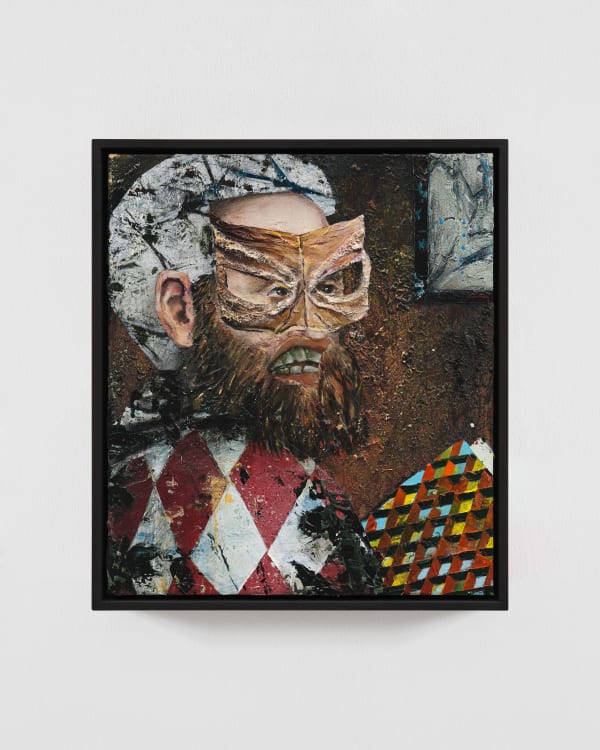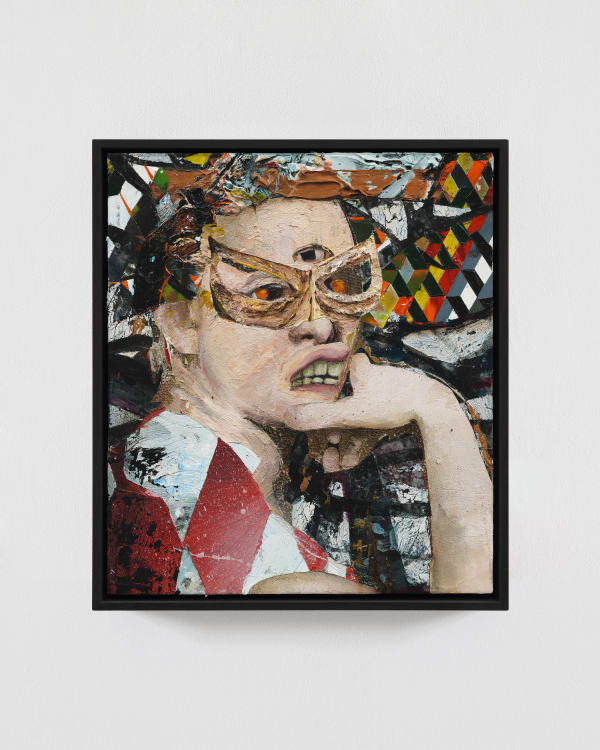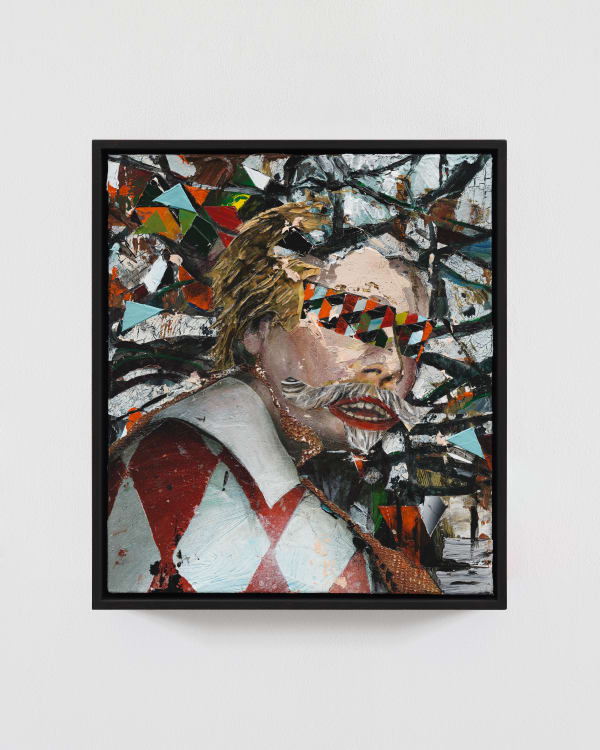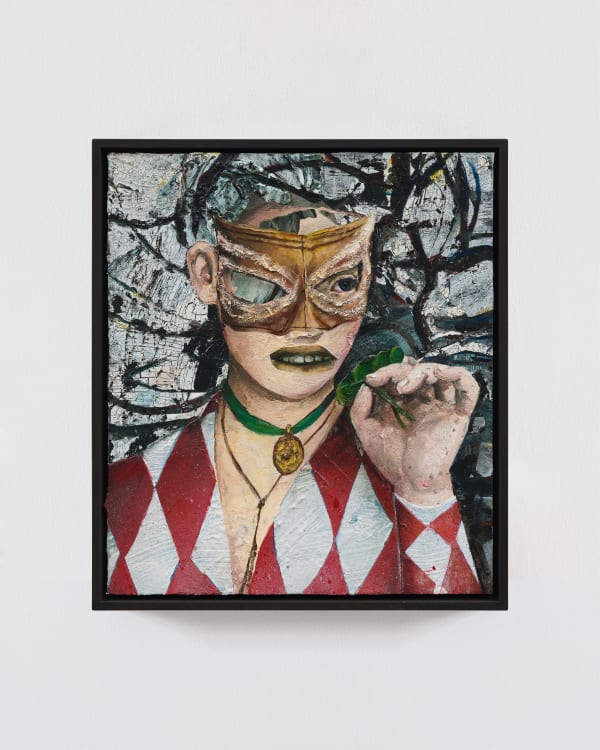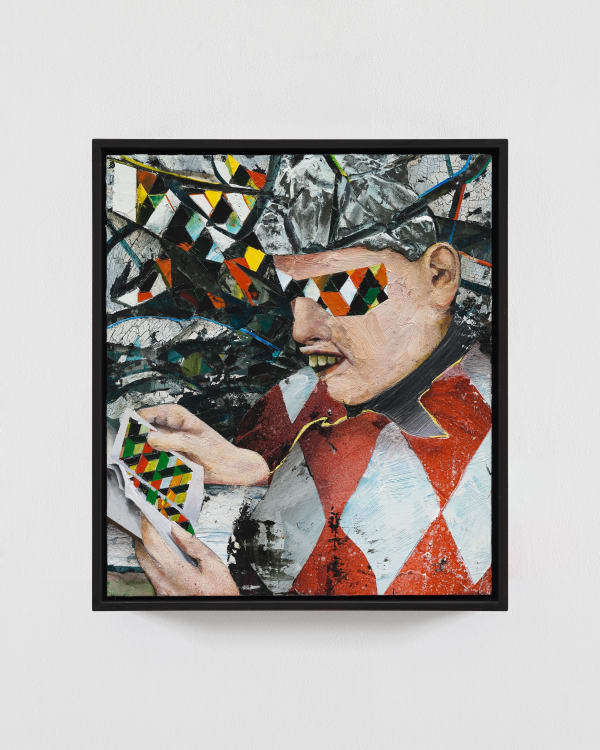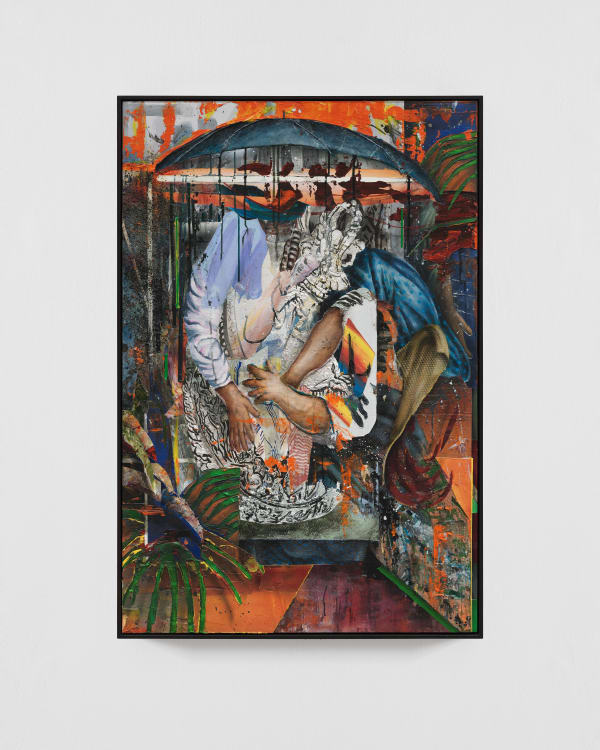Tjebbe Beekman: Glitch
GRIMM is pleased to present a new exhibition by Tjebbe Beekman opening in Amsterdam on January 17 and on view until March 8, 2025. This will mark the artist's fifth solo presentation with the gallery.
Tjebbe Beekman presents a number of new paintings that continue his investigations into painting as philosophical process and language, a means to give form to thoughts and feelings through pictorial logic.
In his work, figures, motifs and objects allude to the specific languages and worlds of other painters but also function as teases, dragging the viewer on to narratives that operate outside their environments.
Take for example the assertively titled The artist is present, with the artist standing in a pink painter’s smock, fingers nervously intertwined. A burst of foliage erupts from an obscured neckline, culminating in the head of a flower that either obscures or becomes the figure’s visage. This hybrid figure is situated within an undefined space, atop a raised platform and framed by both intersecting architectural details and mysterious pearls that float across the surface.
A similar dismembering of the figure is present in Symbiosis XIII, a continuation of Beekman’s series of paintings with this title, here a triptych in which each body is crowned by a fluttering red pompom. The lower half of each makes reference to the dress codes of cross-century genre painting, draped fabrics and cream tights. The harlequin motif employed here appears across the show, notably in a series of small portraits. Theatre’s perennial buffoon, here with eyes obscured or masked, is shown at study or in conceited poses, whilst also making reference to Cézanne and Picasso’s own paintings of the commedia dell’arte subject.
The backdrops feature snatches of recognisable motifs alongside vast swathes of colour, dragged across the surface and adding to the sense of displacement that pervades within these indeterminate spaces. Beekman creates abstraction in a real space, depicting physical spaces that the viewer thinks they could walk around in, but in fact could only really exist in the mind.
His use of the triptych format draws as much from religious altarpieces as it does from 20th century practitioners working with the format, most notably Max Beckmann and Francis Bacon. Like Beckmann and Bacon’s own tortured, contorted figures, Beekman’s work is also suffused with violence, with an emphasis on striking body language and a chaotic intensity of colour and form. It is typical of his practice to be replete with art historical allusions, culling imagery from across generations of his peers and progenitors.
A form of violence is also enacted on each picture plane, with dense skeins of acrylic and emulsion, often combined with grit or sand, heavily applied to each ground, giving sculptural weight to the figures, landscapes and interiors. Through carefully building up these surfaces, Beekman creates the co-existing reality that the painting is both illusion and object.
The Flemish philosopher Ignaas Devisch has been a recent source of interest for Beekman and one can deduce parallels between his recent writings and these new paintings. Devisch writes that we live in an ‘information epidemic’ in which an enormous bulk of information is thrown at the public the whole time. Efforts to attempt to absorb all this will only lead to overstimulation and the feeling of being overwhelmed; ‘We have more information than ever, but we are not better informed,’ writes Devisch.
This concept of an unknowable volume of information being conveyed is also present in Beekman’s meticulously layered paintings. Confetti-like eruptions of paint appear like digital glitches, pieces of data that cannot be accurately rendered or are deliberately obscured. This physical glitch is also temporal, a metaphor for our present in which one disruptive historic moment immediately follows another.
Beekman deploys the received wisdom of centuries of art and visual culture to explore timeless human emotions and stories, yet any attempts to ‘read’ these paintings as text is to fall prey to Beekman’s meandering mind. In his hugely complex surfaces, the viewer is taken through time and across genres, the result being a personal reflection of the current day.
About the artist
Tjebbe Beekman (b. 1972 in Leiden, NL) attended the KABK: Royal Academy of Art in The Hague (NL) from 1993 to 1997, followed by the Rijksakademie van Beeldende Kunsten in Amsterdam (NL) from 2003 to 2004. Awards and nominations include the Theo Wolvecamp Prize (NL), Buning Brongers Prize (NL), and the Royal Painting Prize (NL).
Beekman’s work can be found in various public, private and institutional collections including Aedes Art Collection, Amsterdam (NL); ABN Amro Art Collection, Amsterdam (NL); AkzoNobel Art Foundation, Amsterdam (NL); De Nederlandsche Bank, Amsterdam (NL); THE EKARD COLLECTION; Collection De Heus-Zomer, Barneveld (NL); The Hort Family Collection, New York, NY (US); ING Art Collection, Amsterdam (NL); Kunstmuseum, The Hague (NL); Museum Voorlinden, Wassenaar (NL); Sanders Collection (NL); Stedelijk Museum, Amsterdam (NL); Stedelijk Museum, Schiedam (NL); Straus Family Collection, Peerskill, NY (US).
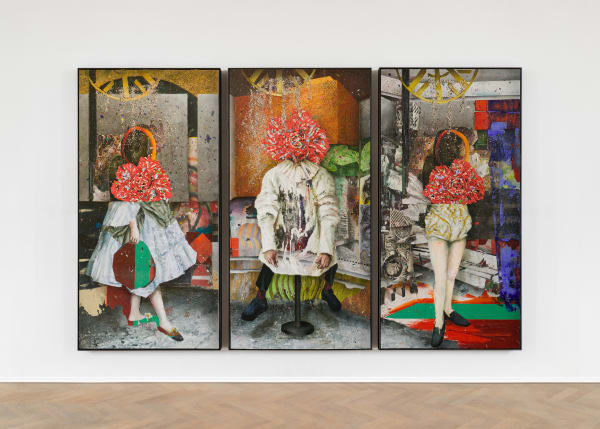
![Tjebbe Beekman De Vaandeldrager [the standard-bearer], 2024 Acrylic, and acrylic emulsions, sand and grit on canvas mounted to wood panel, framed 203 x 152.5 cm | 79 7/8 x 60 in](https://artlogic-res.cloudinary.com/w_600,c_limit,f_auto,fl_lossy,q_auto/artlogicstorage/grimm/images/view/94eeab16d550f09d0a0b4104b9f9b472j/grimm-tjebbe-beekman-de-vaandeldrager-the-standard-bearer-2024.jpg)

